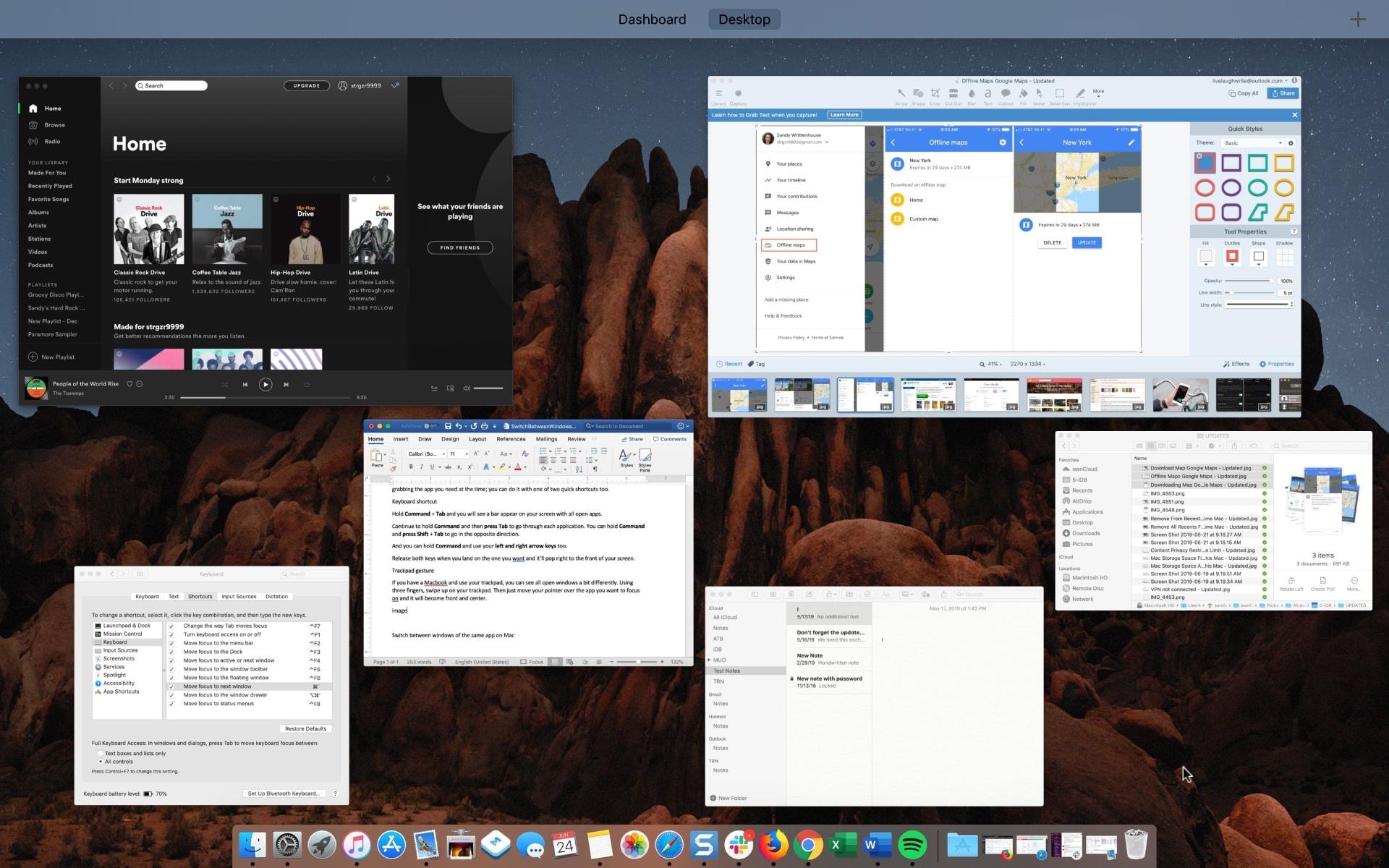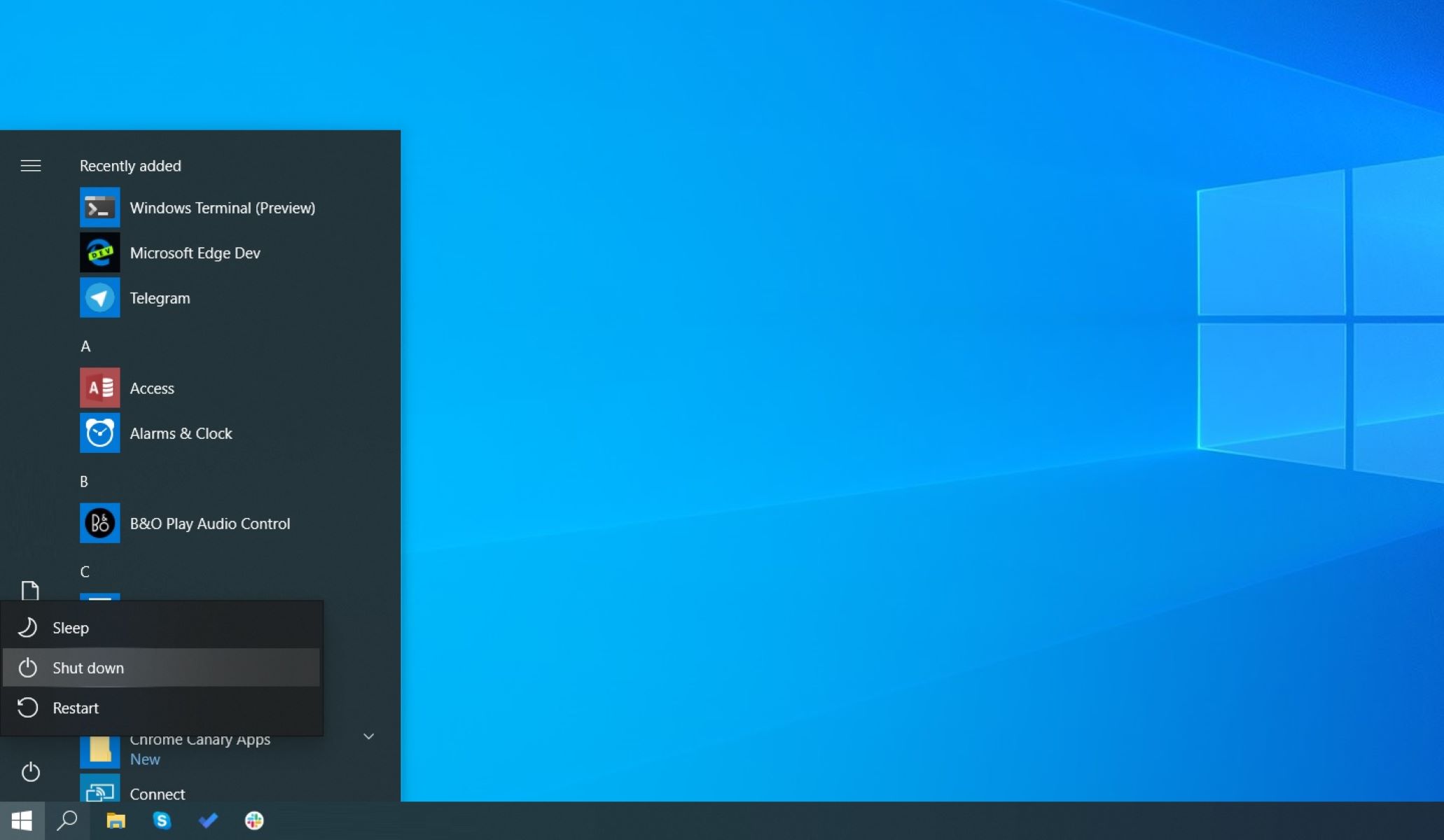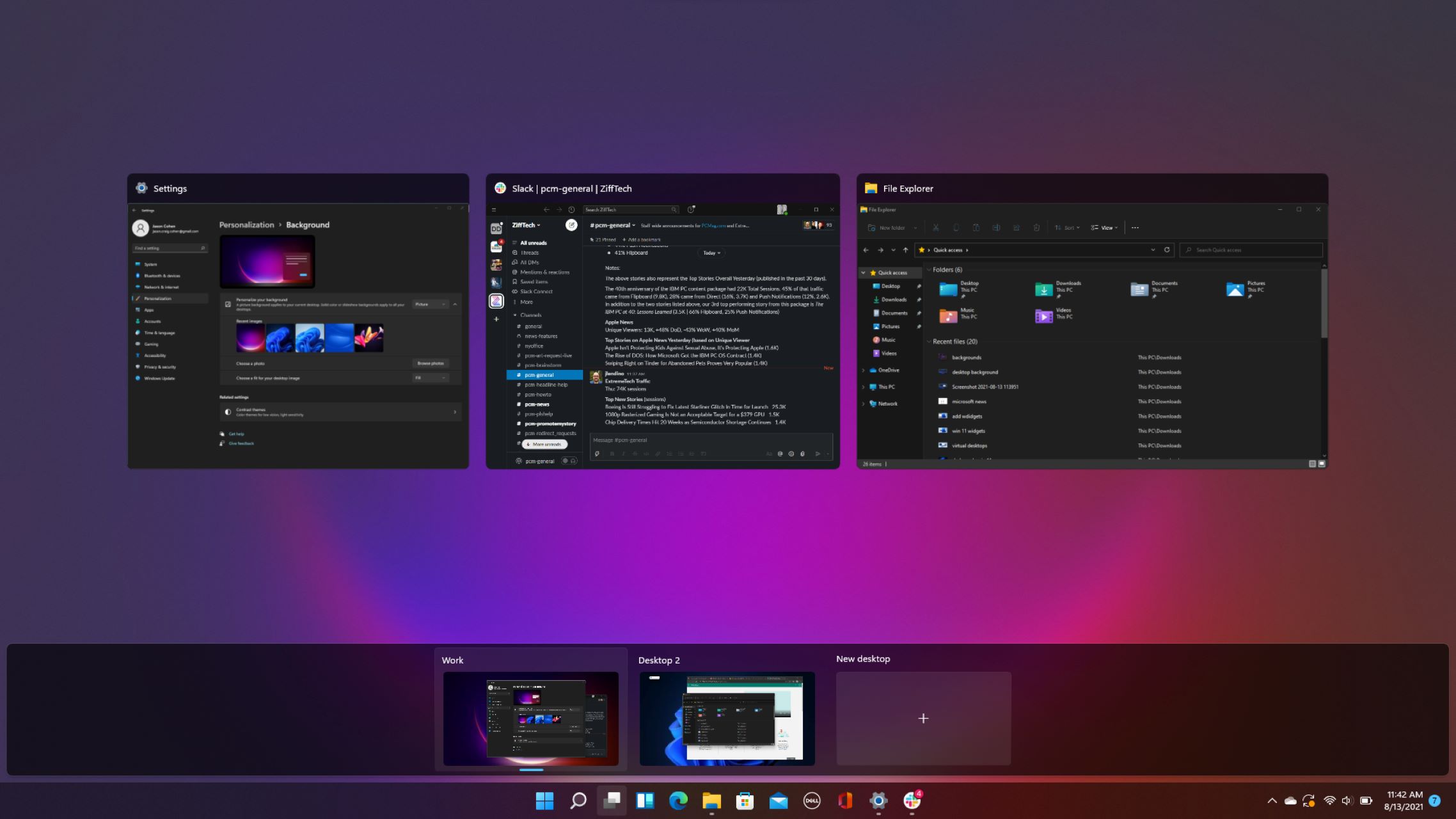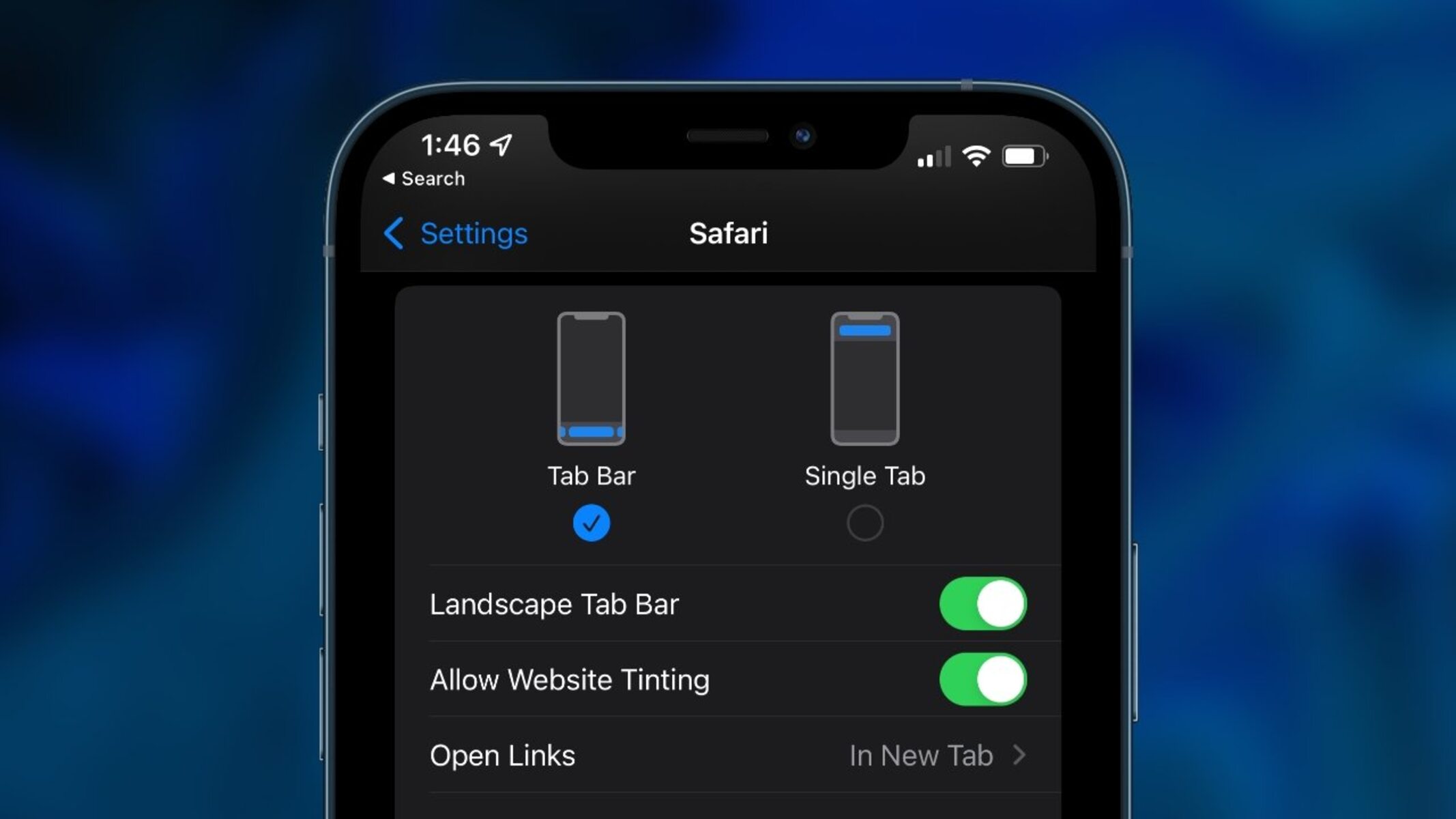Introduction
Welcome to our comprehensive guide on how to efficiently close a window using keyboard shortcuts. Whether you’re a seasoned computer user or just getting acquainted with technology, knowing the keyboard shortcuts for closing windows can significantly improve your productivity and save you valuable time. While most people are familiar with the traditional method of clicking on the ‘X’ button to close a window, using keyboard shortcuts can be much faster and more convenient, especially when you have multiple windows open simultaneously.
In this article, we will explore the various keyboard shortcuts for closing windows on different operating systems, including Windows, macOS, and Linux. Additionally, we’ll also cover how to close windows in popular web browsers. So, whether you’re looking to close a document, a browser tab, or an application window, we’ve got you covered.
Using keyboard shortcuts not only eliminates the need to navigate your cursor to the tiny ‘X’ button, but it also reduces strain on your hand and wrist, making it a more ergonomic option. These shortcuts are designed to streamline your workflow and make multitasking a breeze. So, let’s dive in and discover the keyboard shortcuts that will transform the way you navigate and close windows on your computer.
Shortcut keys for different operating systems
Keyboard shortcuts vary depending on the operating system you are using. Here, we will outline the most commonly used shortcut keys to close a window in Windows, macOS, and Linux.
- Windows: In the Windows operating system, the most widely used keyboard shortcut for closing a window is Alt + F4. This combination instantly closes the active window, whether it’s a document, application, or browser window. Additionally, you can use Ctrl + W to close the current tab in a web browser.
- macOS: On a Mac, the keyboard shortcut for closing a window is Command + W. Similar to Windows, this combination allows you to close the active window or individual tabs in a web browser.
- Linux: The keyboard shortcuts for closing windows in Linux are similar to those in Windows and macOS. To close a window, you can use Alt + F4. Similarly, Ctrl + W can be used to close tabs in web browsers.
Mastering these keyboard shortcuts will greatly enhance your efficiency when working on your computer. Instead of relying on the mouse and navigating through menus, you can quickly close windows with just a few key presses.
Keep in mind that these keyboard shortcuts are standardized across most applications, ensuring consistent functionality across different programs. However, certain applications may have their own unique shortcuts, so it’s always a good idea to explore the shortcut options specific to the software you are using.
Now that we have covered the basic shortcuts for different operating systems, let’s move on to the specific methods for closing windows in Windows, macOS, Linux, and web browsers.
Closing a window in Windows
In Windows, there are various ways to close a window depending on the application you are using. The most common methods are using keyboard shortcuts or clicking the ‘X’ button in the top-right corner of the window. Let’s explore these options in more detail:
- Keyboard Shortcut: The most popular keyboard shortcut for closing a window in Windows is Alt + F4. Simply press and hold the ‘Alt’ key on your keyboard and then press the ‘F4’ key. This will instantly close the active window, whether it’s a document, application, or browser window.
- ‘X’ Button: Another way to close a window is by clicking the ‘X’ button in the top-right corner of the window. This button is commonly present in most applications and browser windows. Simply move your cursor to the ‘X’ button and click on it to close the window. However, keep in mind that some applications may have a different location or appearance for the close button, so make sure to look for it in the window’s title bar or menu.
- Context Menu: In certain applications, you can right-click on the window’s taskbar button to open a context menu. From there, you can select ‘Close’ or ‘Close Window’ to close the active window. This can be particularly handy when you have multiple windows open and want to quickly close a specific one.
Whether you prefer using keyboard shortcuts or mouse clicks, mastering these methods will allow you to swiftly close windows in Windows and save precious time.
It’s worth noting that some applications may have additional options when closing a window. For instance, you may be prompted to save your work before closing a document, or you may have the option to minimize the window to the system tray instead of closing it completely. These options can vary depending on the application’s settings and functionality.
Now that you know how to close windows in Windows, let’s explore how to do the same in macOS.
Closing a window in macOS
In macOS, closing a window follows a similar approach to that of Windows, but with some slight differences. Let’s look at the various methods you can use to close a window in macOS:
- Keyboard Shortcut: The primary keyboard shortcut for closing a window in macOS is Command + W. By pressing and holding the ‘Command’ key and then pressing the ‘W’ key, you can quickly close the active window. This shortcut works in most applications and web browsers.
- ‘Traffic Light’ Buttons: Unlike Windows, macOS does not have an ‘X’ button to close windows. Instead, macOS uses a set of three buttons, commonly referred to as the ‘traffic light’ buttons, located in the top-left corner of each window. The red button with a circle symbol is used to close the window. Simply move your cursor to the red button and click on it to close the window.
- Context Menu: Similar to Windows, macOS allows you to right-click or Control-click on the window’s dock icon to open a context menu. From there, you can select ‘Close Window’ to close the active window. This method can be handy when you have multiple windows open and want to close a specific one without switching to it.
Just like in Windows, some applications in macOS may have additional options when closing a window. For example, you may be prompted to save your work or be given the choice to minimize the window instead of closing it completely.
By familiarizing yourself with these methods, you can easily close windows in macOS and streamline your workflow.
Now that you know how to close windows in macOS, let’s explore the different methods in Linux.
Closing a window in Linux
Linux provides several ways to close windows, giving you flexibility and control over your workspace. Let’s delve into the different methods you can use to close windows in Linux:
- Keyboard Shortcut: The standard keyboard shortcut for closing a window in Linux is Alt + F4. Similar to Windows and macOS, pressing and holding the ‘Alt’ key and then pressing the ‘F4’ key will quickly close the active window. This shortcut works in most applications and web browsers.
- Close Button: Like other operating systems, Linux also has a close button in the title bar of each window. The close button is usually represented by an ‘X’ symbol. Hover your cursor over the button and click on it to close the window.
- Context Menu: Some Linux desktop environments, such as GNOME or KDE, offer a context menu when you right-click on the window’s title bar. From the context menu, you can select ‘Close’ or ‘Close Window’ to close the active window. This method can be particularly useful when dealing with multiple windows and want to close a specific one.
Linux also allows for additional customization, allowing you to assign custom keyboard shortcuts for closing windows in specific applications or using alternative methods like gestures.
Keep in mind that certain Linux distributions or desktop environments may have slight variations in their default keyboard shortcuts or window management methods. It’s always a good idea to explore the specific documentation or community resources for your particular setup to tap into the full potential of your Linux system.
Now that you are familiar with closing windows in Linux, let’s move on to closing windows in web browsers.
Closing a window in web browsers
Web browsers offer specific methods to close individual tabs or the entire browser window. Whether you’re using Google Chrome, Mozilla Firefox, Microsoft Edge, or any other browser, the following methods are generally applicable:
- Keyboard Shortcut: The most common keyboard shortcut for closing a tab in web browsers is Ctrl + W (or Command + W on macOS). By pressing and holding the ‘Ctrl’ key and then pressing the ‘W’ key, you can swiftly close the current tab. If you want to close multiple tabs in succession, you can keep pressing the ‘W’ key while holding the ‘Ctrl’ key.
- Mouse Click: Each tab in a web browser has a small ‘X’ button on the top-right corner. You can simply click on that button to close the individual tab. Alternatively, you can use the middle mouse button to click on the tab itself to close it. This method is especially convenient when you want to close tabs quickly without relying on keyboard shortcuts.
- Context Menu: Right-clicking anywhere on a tab will open a context menu that provides various options, including ‘Close’, ‘Close Tab’, or similar terms depending on the browser. Selecting any of these options will close the respective tab.
It’s important to note that closing a browser window entirely means all tabs within that window will be closed. This can be done by either clicking the ‘X’ button in the top-right corner of the window or by using the keyboard shortcut Ctrl + Shift + W (or Command + Shift + W on macOS).
Web browsers also offer additional features like session restore, where the previously opened tabs are restored upon relaunching the browser. This ensures that you don’t lose your browsing session even if you accidentally close a window or quit the browser.
Now that you’re familiar with the various methods to close windows in web browsers, we can move on to some additional tips and tricks.
Additional tips and tricks
Now that you know the essential methods for closing windows in different operating systems and web browsers, let’s explore some additional tips and tricks to enhance your window-closing experience:
- Multiple Windows: If you have multiple windows open, you can quickly switch between them by using the keyboard shortcut Alt + Tab (or Command + Tab on macOS). Holding down the ‘Alt’ key and pressing the ‘Tab’ key will allow you to cycle through the open windows. Once you’ve selected the desired window, you can use the appropriate keyboard shortcut or method to close it.
- Save Your Work: Before closing a window or tab, make sure to save any unsaved work. Many applications and web browsers have automatic saving features, but it’s best to manually save your work to avoid losing any important data.
- Customize Keyboard Shortcuts: Some operating systems and applications allow users to customize keyboard shortcuts. If you find that the default shortcuts are not convenient for you, explore the settings or preferences menu to see if you can customize them to suit your preferences.
- Browser Extensions: Consider installing browser extensions or add-ons that enhance the window-closing experience. For example, some extensions offer features like one-click closing of all tabs, warning prompts before closing multiple tabs, or even hotkeys for specific tab actions.
- Task Manager: In situations where a window becomes unresponsive or uncloseable, you can utilize the task manager of your operating system (such as Task Manager in Windows or Activity Monitor in macOS) to force-close the problematic window or application.
By incorporating these tips and tricks into your daily workflow, you can become a more efficient user and streamline your window-closing process.
Now that you’re equipped with a wealth of knowledge on closing windows with keyboard shortcuts and other methods, you can navigate your computer with ease and save valuable time.
Conclusion
Closing windows using keyboard shortcuts is a valuable skill that can significantly enhance your productivity and streamline your workflow. Whether you’re working on Windows, macOS, Linux, or browsing the web, learning the appropriate keyboard shortcuts and methods for closing windows allows you to efficiently manage your tasks and navigate your computer with ease.
Throughout this guide, we have explored the essential keyboard shortcuts for closing windows in different operating systems. We discussed the use of shortcuts like Alt + F4 in Windows, Command + W in macOS, and Alt + F4 in Linux. Additionally, we explored how to close individual tabs or entire browser windows in web browsers using shortcuts like Ctrl + W or the mouse click method.
We also provided additional tips and tricks to enhance your window-closing experience, such as customizing keyboard shortcuts, saving your work before closing, utilizing task managers when needed, and exploring browser extensions that offer extra functionality.
By incorporating these techniques into your daily computer usage, you will save time, reduce strain on your hand and wrist, and become a more efficient user overall. Remember to practice these shortcuts regularly to become familiar with them, and don’t hesitate to explore further customization options offered by your operating system and applications.
Now that you’re equipped with the knowledge and skills to efficiently close windows with keyboard shortcuts, go ahead and start incorporating these techniques into your everyday tasks. Enjoy a faster and more convenient workflow as you navigate through windows and web browsers with ease and grace.

























